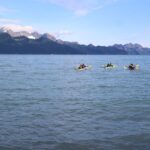Located just south of Anchorage, the Kenai Peninsula is full of natural beauty and adventure activities, including kayaking. The peninsula has many glaciers in its southern areas within Kenai Fjords National park , as well as several rivers, lakes, and national forest spots. As such, the Kenai has earned the moniker of “Alaska’s Playground” mainly because of the many things that visitors can do in the area, which ranges from epic bear viewing, birding, hiking, and biking to the more extraordinary things like dog sledding, glacier watching, and marine wildlife viewing. Kayaking on the Kenai is a treat and is not to be missed.
The Kenai Peninsula is dotted with bays, inland marshes, lakes, and tidewater glaciers. The Kenai is a kayaker’s haven if you know where to go, and being so close to Anchorage, it’s easy to plan for. As such, here’s a list that we’ve rounded up for you, just in case you’d want to visit Alaska’s playground or are already planning an Alaska itinerary and want to add kayaking to it.
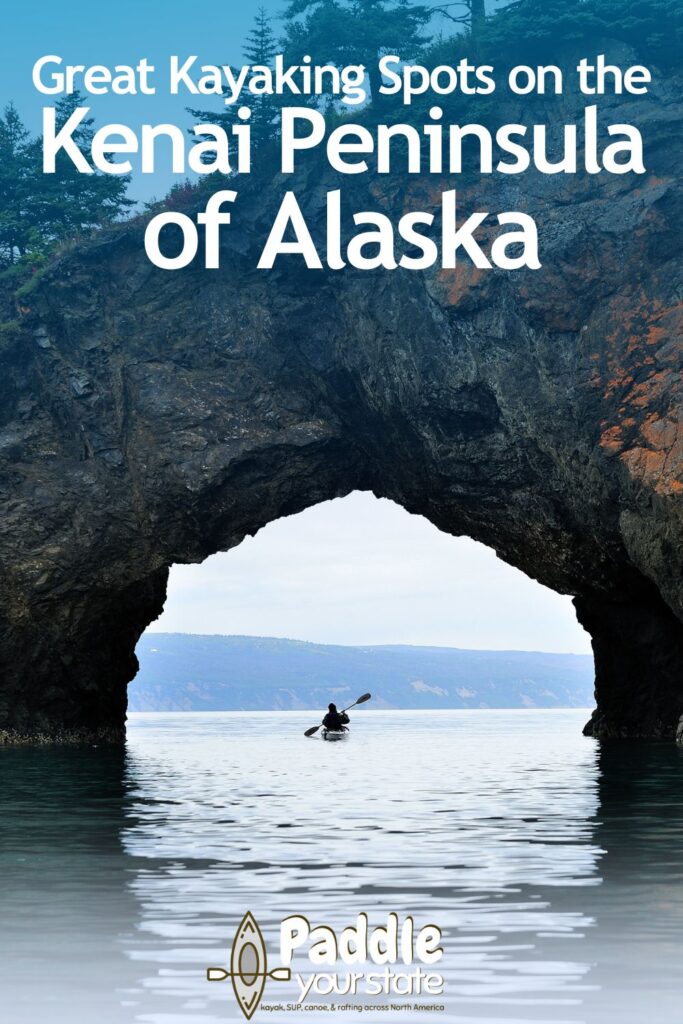
As you get into the more advanced kayaking spots, you’ll see that we recommend guides and tours for most of them. Kayaking in Alaska, especially on the Kenai Peninsula, is complex. The Gulf of Alaska brings intense weather and fjords and bays around the Kenai are further away than you might think. Like with any paddling recommendations from us, always choose safety first, be sure you have the correct gear for the kayaking trip, and make sure others know what/where you are planning to kayak. The Kenai is awesome, but be safe!
Easy Kayaking Spots in the Kenai Peninsula
The many kayaking spots on the Kenai Peninsula offer all levels of difficulty. To jump-start our routes in the various choices available, here is a list that we rounded up for beginner-level kayaking spots. Keep in mind that water levels and weather have an impact on the difficulty of paddling, and with the weather coming off the Gulf of Alaska, the Kenai Peninsula can go from sunny to stormy very quickly.
Kayaking on Resurrection Bay – Seward
Resurrection Bay sits at the northernmost edge of a deep fjord and to its west are 700 square miles of ice known as the Harding Icefield. For a fun day of kayaking out of Seward, Alaska, explore the bay’s deep blue waters, its weathered coastlines, and the various protected areas around it. A favorite among novice kayakers, the part of Resurrection Bay closest to the Seward Boat Harbor is often calm and offers a relaxed pace for a kayak route along the end of the fjord. Paddle south towards town and along the waterfront.
Even this close to boat activity and most of the active population of Seward, you’ll still have encounters with wildlife. Just here in the marina we came across a sea otter and several sealions and a harbor seal. All of this while a bald eagle perched on the dock. You can’t go wrong having a kayaking day on the Kenai Peninsula if you start here!
Where to launch:
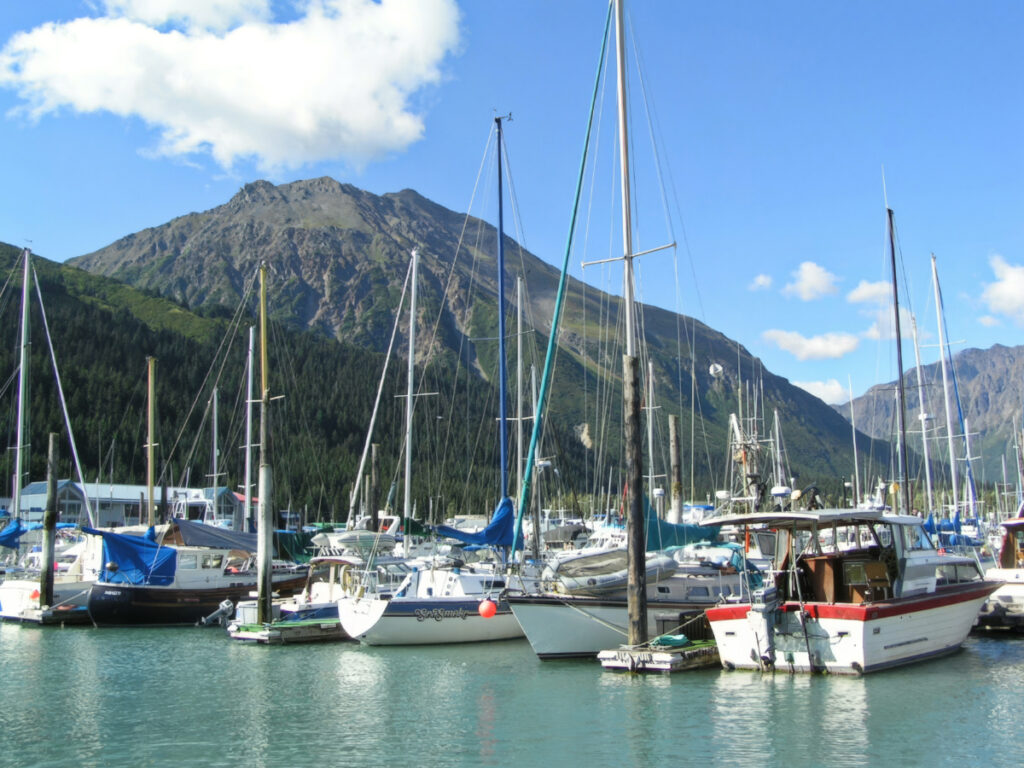
Bear Glacier – Seward
A paddle starts at Callisto Head and is either an all day paddle from the Seward Boat Harbor or a boat drop off (you’ll need a tour or a buddy with a boat for the easy drop off). From Callisto Head, paddle towards the iceberg forests of Bear Glacier. There’s a lagoon full of ice from the glacier, and sometimes it flows out along the shallow riverway that stretches into the Gulf of Alaska. It is the only access to the route. Waters are generally calm, but considering that the route goes through glaciers, it can get quite cold.
Whenever you’re paddling near iceberg, including seemingly small ones, you always need to give them plenty of space. You never know how much of it or what the shape of the ice is below the surface, and icebergs, large and small, can flip or shift at any time.
*SUP-friendly
Where to launch:
- Callisto Head for drop off, or paddle from Seward Boat Harbor.
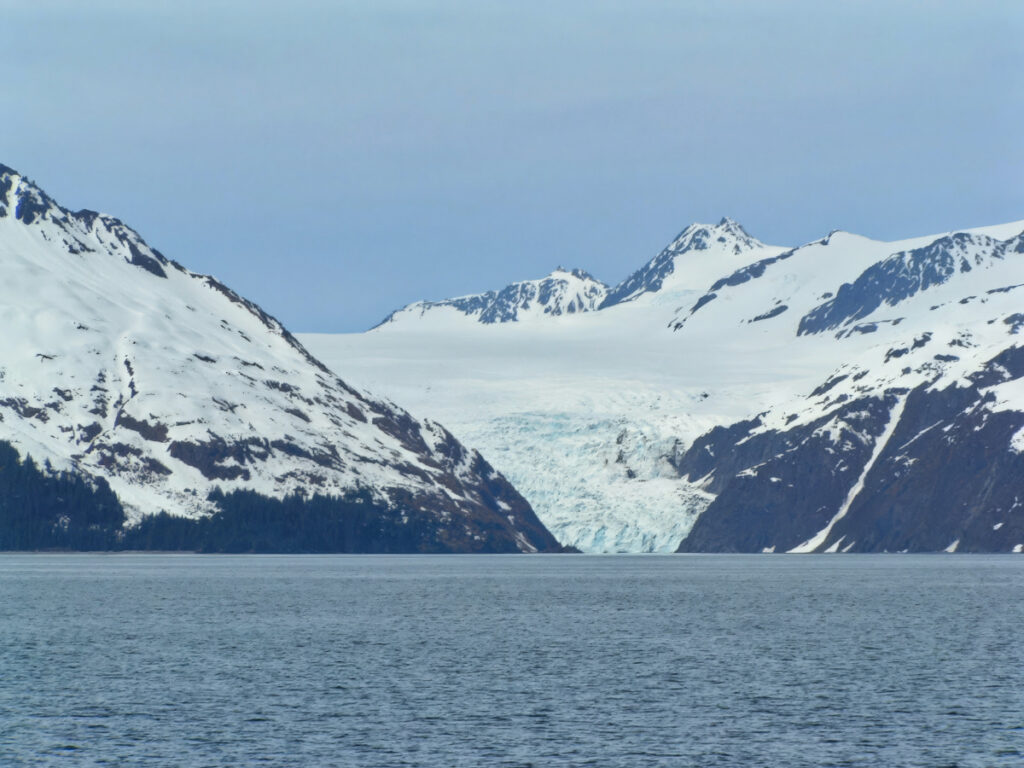
Swan Lake/ Swanson River Canoe Trail – Sterling
Swan Lake is composed of 30 small linked lakes, rivers, and portages located in the heart of the Kenai National Wildlife Refuge. This is just north of Soldotna and Kenai (the town), in the northwestern part of the Kenai Peninsula. The canoe trail attracts a lot of visitors and is considered one of the best places to kayak on the Kenai for beginners. Several small rapids and riffles add a bit of spice to the trail.
I’ve seen lots of moose between here and Nikiski, so be mindful of the wildlife in the waterways. Moose can run and swim fast, so give them plenty of space. If this sounds like something you don’t want to experience on your own, you should for sure consider a guide. Alaska Canoe and Campground is THE guide for the area, and while I haven’t gone out with them, they’ve been guiding here for a very long time so for sure know what they’re doing.
*SUP-friendly
Where to launch:
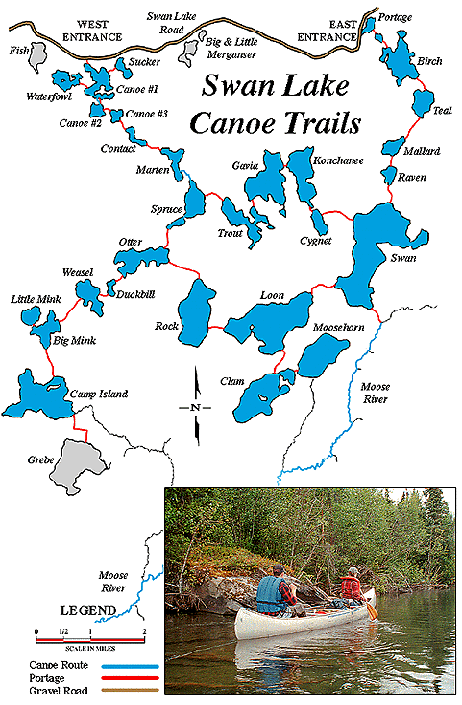
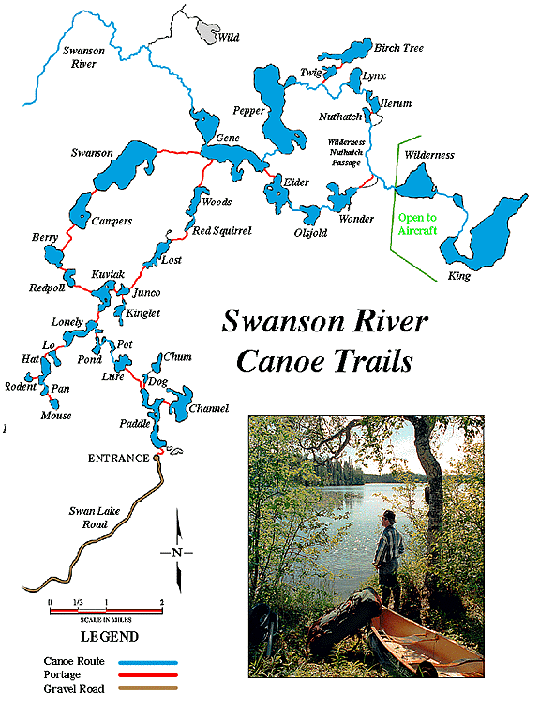
Kenai Lake – Cooper Landing
Kenai Lake is an easily accessible, large body of water located at the heart of the Kenai Peninsula. The water is calm and almost glass-like during the summer. Five miles into the route paddling south, kayakers can rest at the beach on Porcupine island, and plenty of animals such as birds, moose and squirrels can be seen.
I used to be a horseman here and would always dream about swapping out my job on horseback for a job kayaking on the Kenai instead. The views from the water on Kenai Lake are beautiful and it’s one of the most peaceful places I’ve ever paddled.
Where to launch:
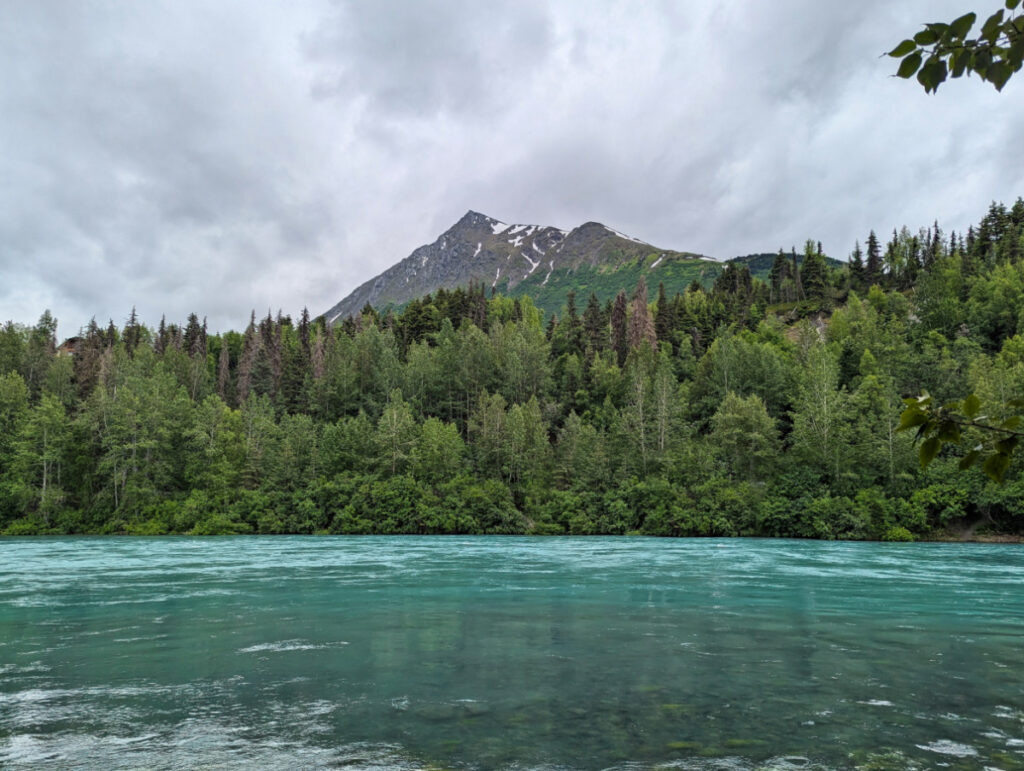
Skilak Lake – Sterling
I remember the first time I camped at Skilak Lake! It was beautiful, we went kayaking and canoeing, and had a great time. There are a few places to launch at Skilak Lake, so depending on the wind when you set out to paddle, choose whichever is feeling the most sheltered, because it can be windy here! The road to Skilak Lake is bumpy and if you have a kayak trailer that you’re towing, be careful.
Where to launch:
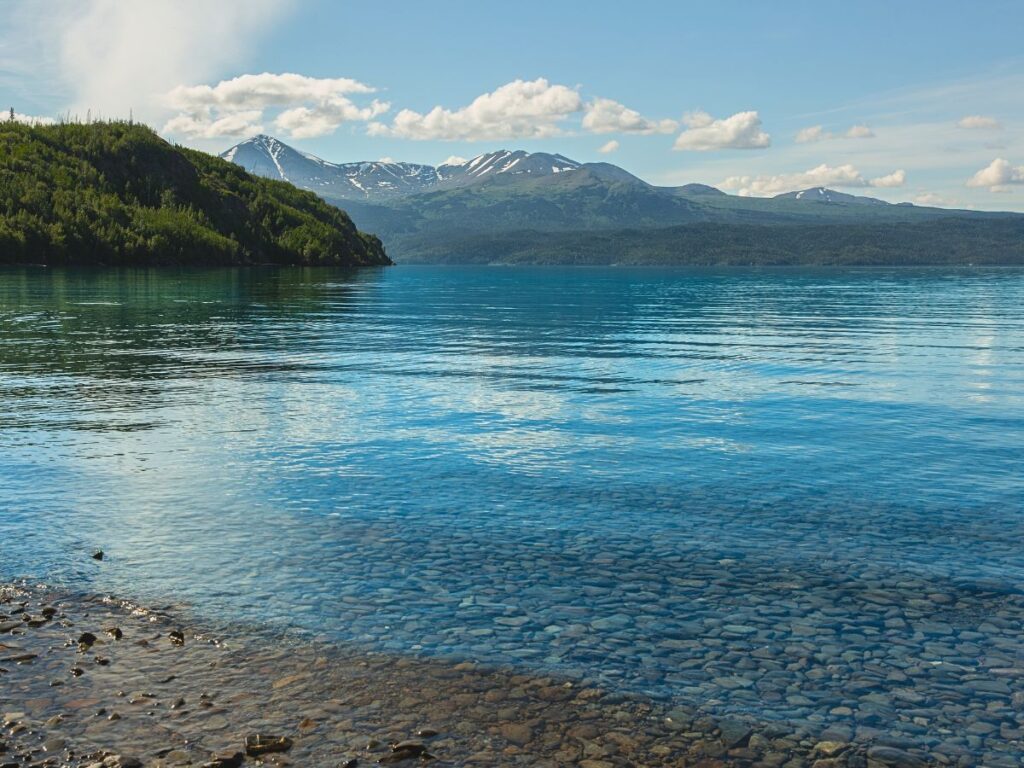
More Difficult Kayaking Spots in the Kenai Peninsula
For kayakers looking for more adventure, challenging tides and longer stretches, and even the occasional falling debris from a glacier, these and more are expected. Colder temperatures too are to be taken note of, as well as rougher tides and higher waves.
Kenai Fjords National Park – Seward
Paddling in Kenai Fjords National Park allows visitors to get up close and personal with the marine life located in the area. As the Kenai Peninsula is full of glaciers with unstable facades, this area is recommended for more experienced kayakers as landings involve surfing when the breeze gets a bit stronger from the south. Wind and rainfall can also be excessive at times and the summer storms can raise the ocean swell to more than three feet. Kayaking in Kenai Fjords is for sure for SAFETY-FIRST folks.
There are a few guides that do special tours to both Aialik and Northwestern Glaciers, but Miller’s Landing is the hub for it. They do their own tours and work with other local guide services. Going with guides is key to having a safe and fun experience kayaking in this area of the Kenai Peninsula. Kayaking here is very different from doing glacial lake kayaking in Wrangell-St Elias National Park.
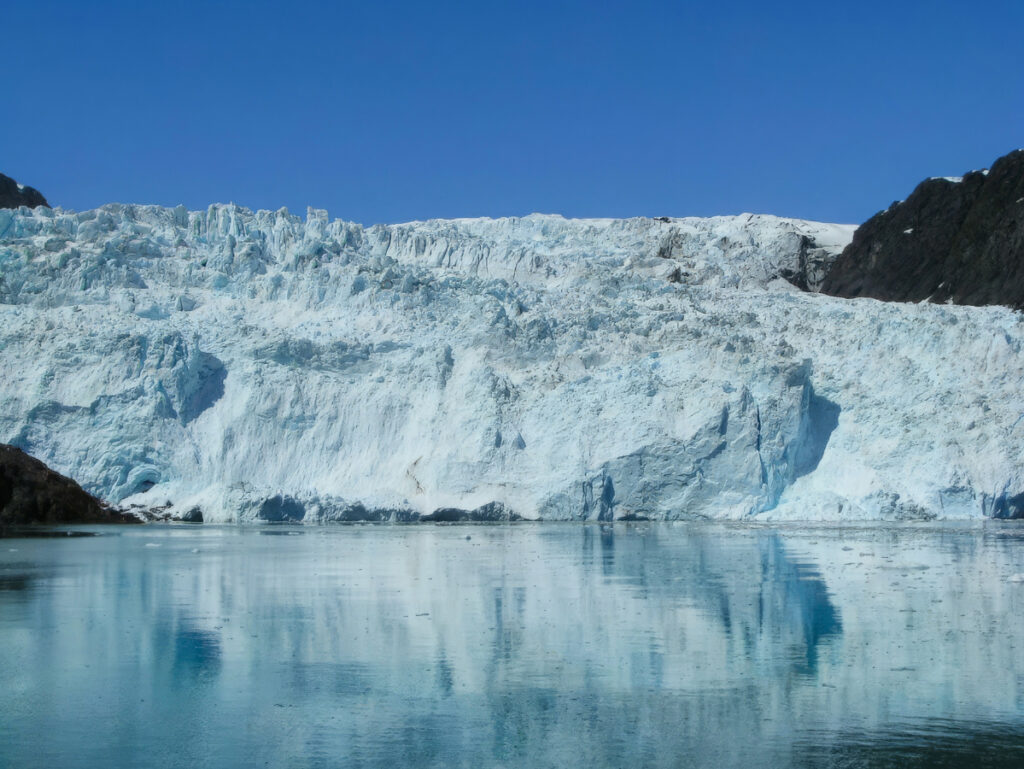
Thumb Cove – Seward
Leaving from Miller’s Landing, Thumb’s Cove is one of the bay’s most scenic and popular paddling routes. Note that paddling to Thumb Cove directly from Steward is not recommended, flying in or taking a water taxi is preferred. Spectacular rock and glacier faces can be seen throughout the route as well as many marine animals that live in the area.
Kachemak Bay – Homer
Because of its dynamic and changing water conditions as influenced by the wind, tides, and currents, Kachemak Bay sometimes becomes suitable for intermediate kayakers. Tidal waves can reach up to 25 feet and can leave kayakers facing strong currents or riptides. Fast-moving waters can be experienced and wildlife such as otters, porpoises, and even whales can be seen along the course.
Kayaking from the Homer Spit on the sheltered side can be a beautiful, safe option for paddling. There are plenty of seals and sea otters to keep you having fun, and if the weather is good, you can enjoy a more calm Kachemak Bay experience. If you plan on crossing the bay to Kachemak Bay State Park, that is a very skilled endurance paddle. It is better to be transported over or take a tour.
Note: if you’re planning on doing some kayak camping in Kachemak Bay and want to paddle from the Homer Spit to the state park instead of doing a boat transport, it’s about 4 miles across to Halibut Cove and the other kayaking spots. It’s doable, but SAFETY FIRST and be well prepared.
Where to launch:
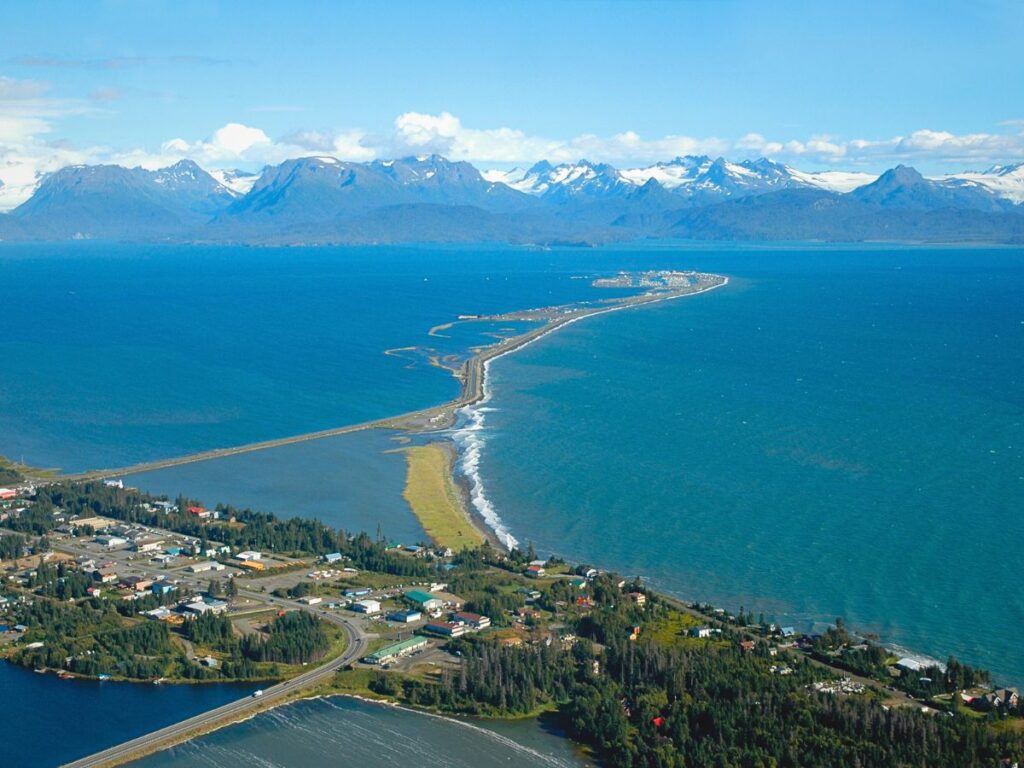
Beautiful Kayaking Spots near the Kenai Peninsula
The Kenai Peninsula is home to Kachemak Bay, Resurrection Bay, and the mighty Kenai River, among others, and connected to each are state parks, preservation areas and marine parks. To date, there are about 16 state parks spanning over 400 square miles across the region. Lush with beautiful landscapes, oodles of wildlife, and majestic scenery, the Kenai Peninsula is definitely a must for any kayaker or wildlife photographer.
Katmai National Park – Fly From Homer
Located on a peninsula in southwest Alaska, Katmai National Park and reserve has wild landscapes of tundra, forests, lakes, and mountains. There is also a valley filled with ash flow from a volcanic eruption many years back and is called the “Valley of Ten Thousand Smokes”. A fun fact about Katmai is that its valleys were used by NASA to train astronauts in recognizing volcanic features, landforms, and materials in the 1960s.
Getting to Katmai is complicated and you’ll need to either fly from Homer or fly to King Salmon from Anchorage. Once in King Salmon, there are outfitters to help you make your kayaking dreams come true. Guides are great for kayaking in Katmai National Park, as they know the waterways AND are well versed in wildlife safety. Katmai is known for the epic bear feeding event, so understanding how to avoid or observe wildlife safely is key.
Where to launch:
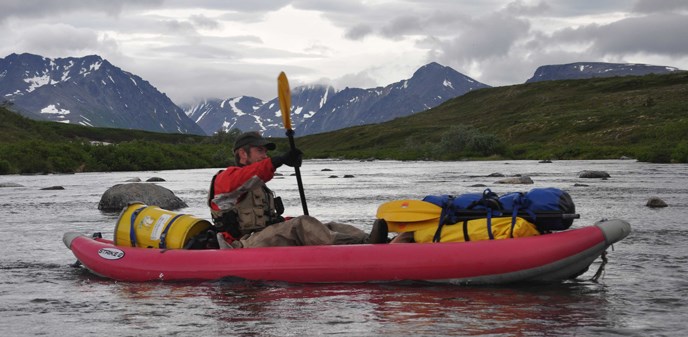
Chugach State Park – Girdwood to Knik Arm
Covering 495, 204 acres east of the Anchorage Bowl in south-central Alaska, this state park was created in the 1970s to provide recreational opportunities and to protect the scenic value of the Chugach Mountains and other areas nearby. Considered the third-largest state park in America, visitors can choose from a wide range of activities from hiking, swimming, and camping to gold-panning, glacier viewing, ATV riding, and even hunting and fishing.
Chugach State Park is just off the Kenai Peninsula (but close). You’ll have to drive along its border to get to the Kenai so planning to visit is easy. Kayaking spots in Chugach State Park include Eklutna Lake, Eagle River and a few hike in spots. The park is best for hiking, but if you’re traveling with an Oru Kayak or an easy but hardy inflatable, there are some nice creeks to spend time on. Check out our picks for kayaking between Anchorage and Fairbanks!
Cool Tours on the Kenai Peninsula
Rafting on the Resurrection River – You could kayak the Resurrection River yourself if you like or you can raft it! Both this river and the Kenai River are great for doing a mellow rafting excursion. Neither is too wild and both have beautiful scenery. One of the reasons I recommend rafting on the Resurrection River is because if you go downstream, it’ll be tough to get back to your launch point unless you’ve coordinated transportation. We stayed at the Seward Windsong Lodge very near the river, and a pickup from here is usually easily arranged.
Resurrection Bay Kayaking – Seward really is one of the best places for kayaking on the Kenai Peninsula. This Resurrection Bay kayaking tour is suitable for beginners and experienced kayakers alike. You can expect to see all sorts of wildlife, from sea otters and harbor seals to bald eagles. If you visit during the late summer, you may also get the chance to stop for a walk along Tonsina Creek to see fish spawning.
Kenai Fjords and Resurrection Bay Half-Day Wildlife Cruise – I love this tour (I know, it’s not kayaking). Travel 55 miles along rugged coastlines where the abundance of wildlife can be seen, from sea lion colonies and seabird rookeries to even whales, sea otters, eagles, and even mountain goats. Water, coffee, and tea are served on board, and free use of binoculars is also included for a better (and safer) way to see the wildlife up-close.
Kachemak Bay Wildlife Tour – Tours provide a unique combination of sightseeing, wildlife viewing, and scenery in the beautiful waters of Kachemak Bay, Alaska. This is a small boat tour, so pretty cool to be able to do when you visit Homer.

Need to Know for the Kenai Peninsula
Gigantic glaciers, various wildlife, and a diverse range of routes are all a part of visiting the Kenai Peninsula. Because of its complex ecosystem, a massive and diverse array of flora and fauna have flourished and have made this area their home. It is also said that the Kenai Peninsula is considered the “birthplace of kayaking”, as people have been hunting and fishing in the waters of the region for thousands of years. It is no wonder then that the Kenai Peninsula would be one of the coolest kayaking destinations in the world.
Summer is the best time to visit the Kenai Peninsula, and the best weather happens in June, July and August, although there is always a high chance that it might rain when you visit. This is also the reason why most of Kenai’s jam-packed festivals happen around this time of the year. Notable ones are Seward’s 4th of July Celebration (and the run up Mount Marathon), the Kenai River Festival and the Kenai Peninsula Beer Festival, and the Salmonfest-all of which are celebrated in August, among many other festivals.
Average summertime daylight on the Kenai Peninsula is about nineteen hours, with the longest days in the month of June. This makes for long beautiful evenings with plenty of light, as compared to nights in December, when there is an average of five hours of daylight. Since we’re talking about kayaking, the summer is THE time to go because autumn and spring can be very iffy for weather. You may not get to see the northern lights when you visit in summer, but the ample daylight is its own phenomena that is unique to experience.
Weather on the Kenai Peninsula
The peninsula’s coastal climate is relatively mild May through October, with heavy rainfall. However, the weather is unpredictable, and it is normal to have temperature shifts of 10-20 degrees in a day. I do remember the summer of 2004 when we had 40 days straight of rain… so you know, be prepared for that.
The Kenai Peninsula is mostly thawed out by mid-May and doesn’t get really cold again until the end of September. Fall happens fast, so there may only be a week or two of fall colors. If you’re thinking about avoiding the highest tourist season but still having okay weather, the first two weeks of June are pretty good and then anytime after Labor Day it’s a lot more calm and quiet.
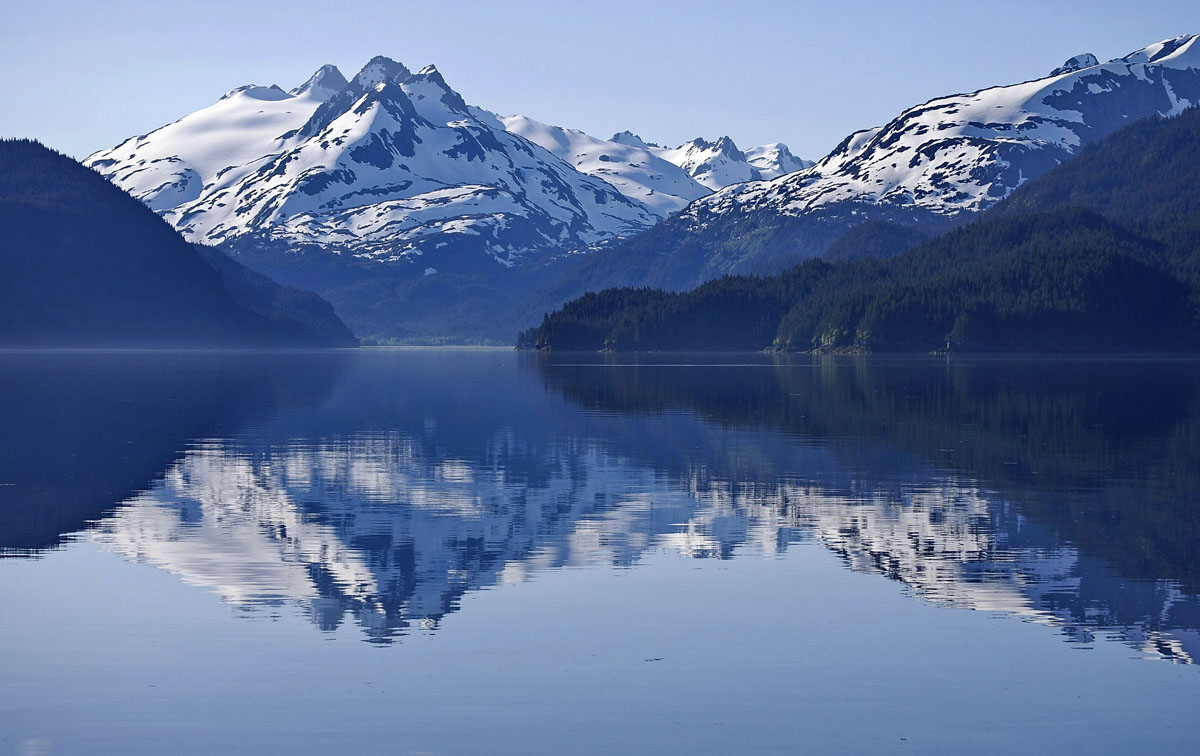
I loved living here and kayaking on the Kenai Peninsula. It’s an amazing place to visit and the sights and wildlife are so very special. If you have any questions about visiting the Kenai or planning a trip to Alaska, please leave a comment or send us a note. We’re always happy to help plan awesome adventures!


